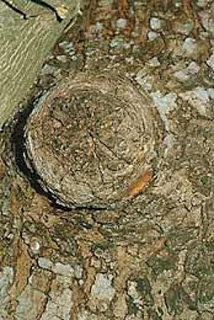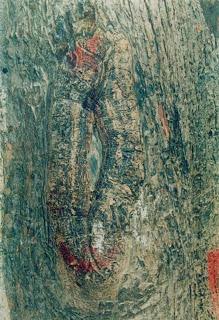
Puri is not only a land of temples, beaches and secnic spots, but also a fairs
and festivals. Every season in Puri brings a host ofcolourful fairs
and festivals presenting
joy to the visitors. Out of all, the most significant is the Car
Festival and
it becomes most important when associated with the Navakalevara. The literal meaning
of Navakalevara is: ‘Nava’ means ‘New’ and ‘Kalevara’ means ‘Body’ (New Body or
re-embodiment). During the Navakalevara ceremony the old figures Lord Jagannath Goddess Shubhadra and Lord Sudarshana are replaced by new onces.
The figure of Lord Jagannath shelters a mysterious Brahma Padartha (The Supreme Matter) and is known as Daru
Brahma. During Navakalevara this Daru Brahma Prime-Soul enshrined in wood) is also transferred from the old figure to the new one.

The Nabakalebara ceremony of the deities takes place in the year when
the month of Asadha (June-July) happens to be an intercalary month (Double Asadha
or two months of Asadha), which means when one lunar month of Ashadha is followed
by another lunar month of Aashadha. The month of double Ashadha is composed of four
fortnights, so the Anabasara period of the Navakalevara year actually over a period of
one month and fifteen days. During this period, the temple remains closed for general
public. During the first fortnight, the new deities are on the Nirmana Mandap.
The second and third fortnights of the double Ashadha months are known as Mala Masa.
In the second fortnight (i.e. the first fortnight of Mala Masa), the Dayitapatis
observe the obsequies because of the death of their family Lords as they are the descendantsof the Lords. In
the third fortnight (i.e. the second fortnight of Mala Masa) the wooden statues
are with cotton and silken clothes and the Anabasara duties are performed.

Generally double Asadha come once in every 12 years but not strickly so. It may occur also in 8 years or 16
years or 19 years depending on the auspicious day. The Nabakalebar function is essentially
unavoidable as an importance of the fact that the are
made of Neem (Margo) wood and wooden images are normally subject to decay in such
a span of time, so changes of the Deities during such interval are felt essential.
Nabakalebara is a very old ritual of the Grand Temple, but it’s very difficult to
guess the exact time since when it has been celebrated. In the 20th century, the
Nabakalebara function was celebrated in the Temple in 1912, 1931, 1950, 1969, 1977
and 1996. The idols that are currently being worshipped in the Jagannath
Temple were installed in the year 1996. Next Nabakalebar Festival will be celebrated in the month of Ashada(July/August) at Puri in 2015.
|



